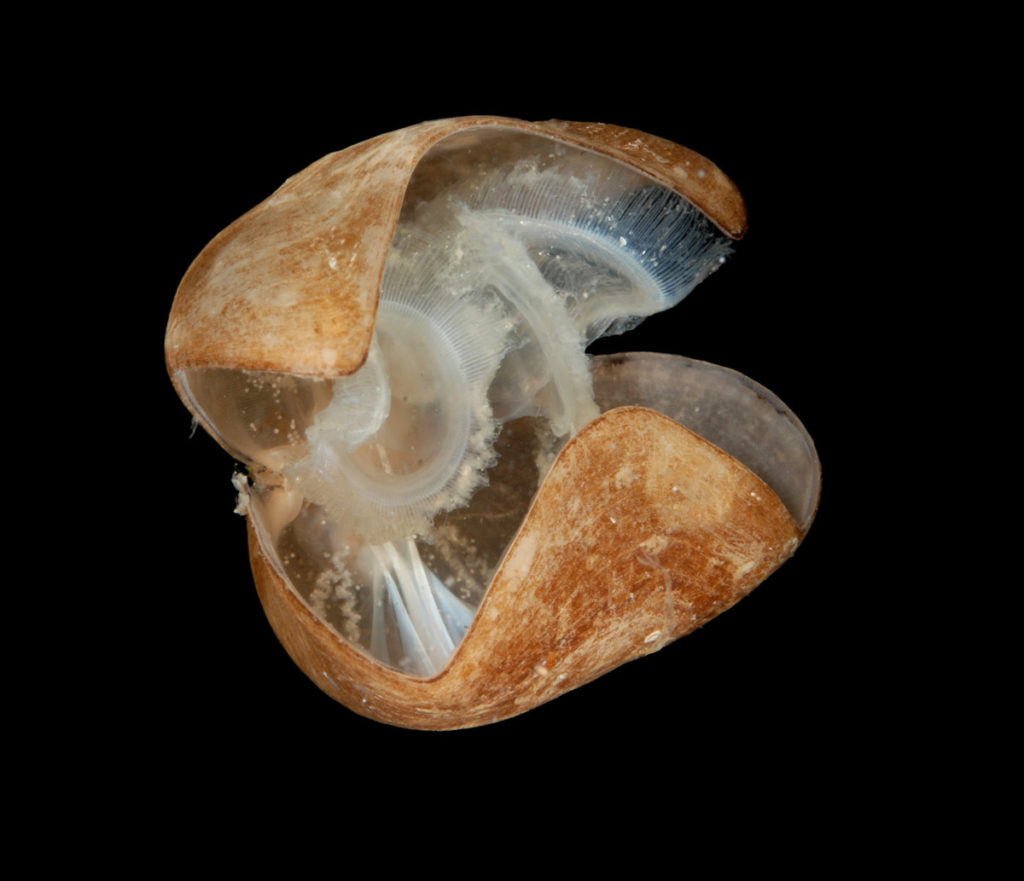The uranium isotope composition of seawater provide insights to how much sediment burial occurs globally in anoxia settings. Therefore, it is desirable to measure uranium isotopes to track the oxygenation state of the oceans through geological time. However, there is currently no geological archive that can reliably record the composition of ancient seawater.

Calcitic brachiopods have shells made of low-magnesium calcite (LMC) that can preserve their original composition through geological time. In her PhD paper, Bettina Livermore presented the first precise U isotope data from modern calcitic brachiopod plus a wide range of other calcifying organisms. This analysis is technically challenging due to the low U abundance in LMC and the small amounts of shell material available in a single shell. However, Bettina did overcome these and measured the isotope composition of only 1 nanogram uranium. Results show that modern brachiopods as well as scleratinian corals (aragonitic) and other calcifying organisms carry uranium with a 238U/235U ratio identical to seawater at the ~0.04 per mil level. This means that well-preserved brachiopods are promising recorders of ancient seawater compositions.
To explore the prospects of brachiopod analysis further, PhD student Alvaro del Rey performed a detailed comparison of ancient calcitic brachiopods that lived in the Late Silurian ocean and their host carbonate rock. Most carbonate in marine sediments forms as cement filling within the pore spaces while the sediments were still wet. Much of this uranium precipitation continues while pore fluids go anoxic due to limited O2 supply from the overlying water column. Under these conditions, U isotopes fractionate in favor of the heavier isotope, 238U, preferentially accumulating inside the sediments. This process implies that marine carbonate cement adopt a 238U/235U signature similar to or greater than that of contemporaneous seawater.
Results show both that many, but not all, brachiopods preserve the composition of ancient seawater and that marine carbonate cements are often, but not always, carrying a positive 238U/235U offset from contemporaneous seawater. Importantly, this isotopic offset is not random, but controlled by some local processes, e.g. sea level. The paper discusses how this may arise and brings us a step closer to reliably extract information about environmental conditions on the early Earth using U isotopes in ancient marine records.

Both papers are published in Geochimica et Cosmochimica Acta:
Livermore et al. 2020. Uranium isotope compositions of biogenic carbonates –Implications for U uptake in shells and the applicationof the paleo-ocean oxygenation proxy
Del Rey et al . 2020: Untangling the diagenetic history of uranium isotopes inmarine carbonates: A case study tracing the d238U composition of late Silurian oceans using calcitic brachiopod shells.
